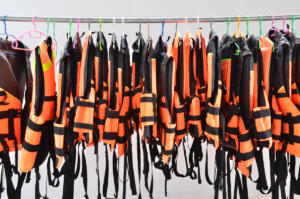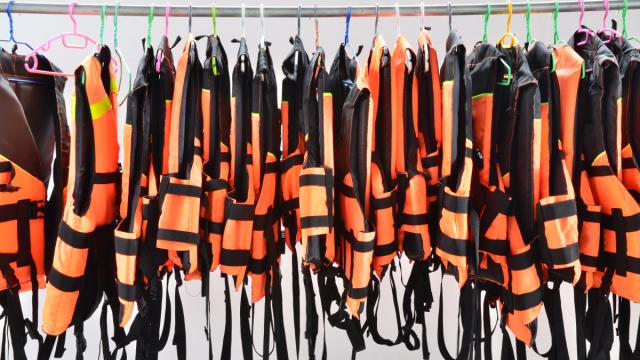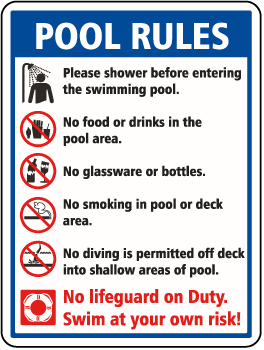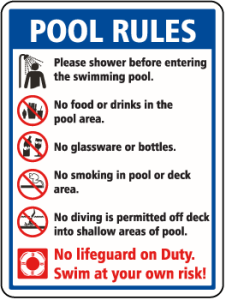One half of fatalities from recreational boating happen on the calm water, often even close to the shore.
In most cases life jackets are on board, but either go unworn or are not worn properly.
Activities that calls for life jackets are:
 Cruising
Cruising- Paddling
- Angling
- Waterskiing
- Racing
- Swimming
- Being Next to the Water
All people, from adult males to young children and pets, should wear the life jackets. Here are ways to ensure you have the right one.
Checking the Size
The size and weight information for each jacket can be found on the label. This will tell the range of weight the floatation device can support as well as the recommend height range of users.
Make sure that the jacket is fastened in the right fashion.
To do this, hold your arms over your head. If the tops of the arm openings can be pulled up past your chin, then the jacket is too big. It needs to be able to hold your head out of the water.
Auto Inflatable Life Jackets
This type of life jacket will automatically inflate upon immersion or from manual activation.
If a person wearing an inflatable jacket is in an accident and rendered unconscious, the device will turn the wearer face upwards.
These life jackets are not meant to be worn by children 16 years of age and younger. Additionally, this floatation device is not suitable for use in water sports.
Manual Inflatable Life Jackets
These jackets inflate only when wearers manually trigger the inflation device.
Manually inflatable jackets are cool and comfortable to wear since they are not bulky like most other life jackets.
This kind of jacket will also turn the wearer face up should they be rendered unconscious; however, it has to be inflated before their accident.
These do require some regular maintenance to insure inflation devices and pull cords are in working order and that there are no holes in the jacket itself. Jackets of this kind should not be worn by children 16 or younger.
They are not recommended for water sports either.
Belt Pack Inflatable
This life preserver will also inflate automatically if it is submerged or it can be manually inflated.
Very easy to wear, this device wraps around and is secured to the wearer’s waist.
It should be placed over the head after it has been inflated and also requires regular maintenance.
Belt packs are not meant for water sports or children 16 and younger.
Vest Life Jackets
This is the most seen life jacket. They are typically orange.
The vest can turn an unconscious person face up and requires very little maintenance.
This is a great life jacket for those who do not know how to swim. It is also versatile as it is great for using as a flotation device. It is normally less bulky than other off-shore vests.
Children’s Hybrid Inflatable
These types of life jackets offer automatic inflation, but it can also be inflated manually.
These do require regular maintenance, and will turn an unconscious person upward like others mention previously.
It is not meant to wear during water sports.
Children’s Life Jacket
These types of life jackets are designed for possible immersion.
It may not turn a person face up, but requires little maintenance.
Most types of life jackets typically includes safety features for your child.
For more information check out the How to Choose the Right Life Jacket brochure from the United States Coast Guard found here.



